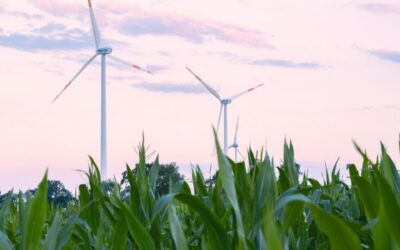Since Alberta deregulated its electricity sector almost 20 years ago, Alberta has had a market-driven electricity sector that is unique in Canada. Wielding private sector innovation and market forces, Alberta’s electricity system has typically responded quickly to generation technology advances, demand growth, and policy signals like carbon pricing. As a result, Alberta’s grid has decarbonized at a dramatic clip since 2015, cutting its emissions in half even as the system has grown.
But Alberta’s “energy-only” market, where electricity generators are paid primarily for the power they produce, was not designed with low-cost wind and solar in mind, and recent grid emergencies are raising questions about the signals the current market design sends in a changing landscape. The market was designed 20 years ago, when inflexible coal plants provided 80 per cent of supply in the province, with an expectation that competition in the market would increase, and well before renewables dominated new supply additions, as they do today.
The recent electricity price spikes witnessed in Alberta have come as the market moved between years with supply surplus, to tighter market conditions. While it is a market design feature that new supply investment waits for very high prices resulting from tightening supply, the last few years in Alberta were aggravated by a lack of competition. The resulting price volatility is challenging for consumers, particularly those unable to access the non default electricity rate, and with record-high prices in 2022 and 2023, the government intervened to buffer segments of the residential market by capping the price of the regulated rate for electricity with a loan to be repaid later.
Following these developments and interventions, the need for a deeper market redesign has come sharply into focus. Major changes are in the works, with recent policy announcements and more policy discussions and roll-outs to come over the rest of this year.
What does all this mean for affordable, reliable, and clean electricity for Albertans?
How has Alberta’s electricity market worked up until now?
The Government of Alberta has never owned a public utility, which is still the dominant model in six provinces. Two others have cost-of-service regulated, investor-owned monopoly utilities (Nova Scotia and Prince Edward Island), and Ontario runs a wholesale energy market for dispatch, though out-of-market centralized (read: “government agency”) procurement of long-term contracts have dominated new generation choices. All other provinces have a vertically integrated Crown utility. Despite some regional differences, the common feature across these nine provinces is that generation choices remain largely centrally planned.
By contrast, electricity supply in Alberta has been guided by a market-based system open to competition and investment from independent power producers (IPPs). This system is a competitive, real-time, energy-only wholesale electricity market, which pays generators for the energy they produce, based on market prices that are set each hour.
The electricity market determines which sources of electricity are dispatched to consumers based on the cost of electricity on offer from suppliers at any given time. Electricity supply is dispatched in merit order from lowest to highest cost offers on the market, where the most expensive bid taken sets the price.
Funds raised through this competitive process represent the main sources of revenue available to most generators, who must recover both their capital and operating costs from these energy revenues alone. (Alberta also operates a small ancillary services market, which provides relatively minor additional revenue opportunities for a small set of generators; some generators have also been able to earn revenues from carbon credit trading.)
The other major components of the grid—transmission and distribution—have remained under conventional cost-of-service regulation. That means utilities recover their operating costs and receive a set return on their capital investment through regulated tariffs on consumers.
Alberta has combined its energy-only, competitive market powered by IPPs with a transmission policy that provides access to transmission for nearly all electricity generators equally—whatever their fuel source, technology, or location—and funds it through consumer payments. This was created to give all generators access to the electric energy market, rather than tilting the market in favor of existing plants.
By signaling to potential generators that transmission would be available to deliver their electricity and that they would not pay any costs to maintain the system, the competitiveness of the lowest-cost energy options has been accentuated. However, because generators do not face a price signal for the costs of system upgrades necessary to deliver the energy, choices related to the location of new generation do not account for the costs it may impose on the transmission system.
So, while the system has been tailored to enable the lowest-cost energy supply, its lack of a signal for the cost of transmission means that not all new additions are cost-optimal from an overall system perspective.
What instigated Alberta’s early-2020s renewable energy boom?
A combination of market forces and emissions policy has rocketed Alberta to the top spot for hosting Canada’s new wind and solar investment in recent years.
In the first two decades of Alberta’s deregulated market, the market’s openness enabled small amounts of early wind development—but significantly more non-renewable resources (fueled by coal or natural gas) were built than renewable.
There were a number of reasons for this. In the energy-only market, wind and solar power projects are “price-takers”, with no control over the prices they receive, as they are non-dispatchable resources with no fuel costs, meaning they have power to deliver when the wind blows and sun shines. As capital-intensive projects in a highly-volatile market like Alberta’s that provides very little predictability, they were very difficult to finance and by 2015, new wind energy growth had stalled, and utility-scale solar was limited to a relatively small pilot project commissioned in 2017.
A confluence of events leading up to 2020 triggered a relatively sudden tipping point for renewable electricity in Alberta. Government procurements removed market risk for a small set of winning renewable energy projects from 2017 to 2019. This enabled a very low cost of capital for these projects, and coinciding with global technology cost declines led to prices for both wind and solar that were lower than Alberta’s historic average market prices. The prices were disclosed publicly and revealed that the government—because of the way the “contracts for difference” were designed to provide a price on which the developers could rely—would likely make money off the contracts (which later proved to be true).
Companies hungry for emissions offsets and renewable energy for their power inputs took note of this, while the procurement drew the attention of international renewable energy developers to the opportunities in Alberta. This kicked off an active power purchase agreement market that employed the same basic contractual instrument as the public procurements. In 2019 and 2020, this purchase agreement deal-making—which took inspiration from earlier U.S. markets—took off in earnest and grew massively in 2021. Because they enable the project financing, deals precede actual projects, but construction wasn’t far behind.
So far, Alberta has dominated renewable energy development in Canada in the 2020s. Claiming 60 per cent of Canada’s solar and wind power construction in 2021, this grew to 77 per cent in 2022, and 92 per cent in 2023. This remarkable increase was the product of Alberta’s open electricity market, underdeveloped nation-leading renewable resources, as well as strengthened environmental, social and governance (ESG) drivers among corporations and institutions, and of course the low costs of wind and solar technologies.
The headwinds of change
Though some commentators observed that the rapid renewables growth in many U.S. states offered a roadmap of the growth to come, system planning did not keep up in Alberta.
Transmission planners consistently underestimated wind and solar growth—for example, solar growth outstripped the system operator’s 20-year forecast within less than 2 years of its publication. As a result, grid congestion has become an unexpected technical reality facing newly built projects, and a spectre hanging over the financing decisions for projects slated to be built in coming months and years.
At the same time, system planning and operating has not kept up to implement reforms within the existing market framework to ensure grid stability and reliability in the face of a quickly evolving supply mix (e.g., the Alberta Electricity System Operator’s (AESO) belated identification of and response to growing frequency response needs).
Meanwhile, other key policy measures to enhance grid flexibility and resiliency have been slow to develop; in particular, measures to enable demand response and storage. Alberta is one of very few jurisdictions with no energy-efficiency or demand-response programs. The province has recently begun to implement regulatory changes to enable storage technologies, but nearly five years has already elapsed since these changes were first recommended by the system operator in 2019.
The result is an accumulation of emerging and forecasted grid challenges: transmission congestion and reliability challenges like load flexibility and frequency management. Though many of these challenges predate the proposed federal Clean Electricity Regulations, which is still under consultation and final design, it has brought them into sharper focus.
Meanwhile, the Alberta government’s policy consultations and announcements around renewables and the broader power market have instilled greater uncertainty and regulatory risk for the path ahead.
What does the future hold for Alberta’s power sector?
The quick answer is: a lot remains to be settled.
The land policy concerns that formed part of the rationale for the seven-month approvals pause for renewable projects have arrived at some resolution, though some questions remain. The province is adding land-based prohibitions and regulatory restrictions relating to “viewscape” and agricultural land protection that will impact a number of projects and likely cancel others. Still, under the announced policy directions, many should be able to proceed.
The more complicated (and likely more impactful) changes will come out of pending market design and transmission policy changes. While some high-level announcements were made in March, a lot of the policy development process is still to come. It is simply too early to speculate on what the changes will mean for Alberta’s power sector.
As interim measures, the government has already introduced new regulations to limit the exercise of market power that comes with lack of generator diversity and competition in Alberta’s relatively small market. Meanwhile, the AESO is implementing near-term operational measures that will create additional incentives to ensure dispatchable supply is available, while placing new technical requirements on wind and solar power to help manage local and system-wide grid issues.
These measures will remove some energy market revenue and add costs to renewable energy operations, but on their own, they are unlikely to prevent corporations from choosing low-cost renewables, which is one key market dynamic that has driven recent wind and solar growth.
There is less clarity on the medium-term. Here’s what we know so far. First, the AESO and government are looking at transmission policy reforms, particularly changes to introduce locational signals and allocate transmission costs based on “causation”. That would mean investments in new electricity supply would have to factor grid infrastructure costs into their project economics.
While these changes could improve price signals around the risks of congestion, they could also significantly increase costs for renewable energy (or any new supply), and undermine its competitiveness. The policy objectives in this stream are still too ill-defined to gauge the magnitude of their potential impact. And as of yet, little has been said about whether grid planning improvements that would be necessary to enable additional wind and solar – like dynamic line ratings and storage for non-wires alternatives – would accompany these changes.
Second, the government and the AESO have announced plans for medium-term measures to implement a “restructured energy market” by 2027. The key changes announced thus far include:
- Adding a day-ahead market as a layer on top of the existing real-time market, to create more incentives and certainty for dispatchable generation, particularly those that require long lead times to start generating after a period of being offline. These are thermal generation assets that are not as adept as quick-response assets, such as battery storage, when it comes to complementing variable renewables.
- Implementing an administrative scarcity pricing curve to allow prices above $1,000/MWh when administratively permitted during supply scarcity, to replace the existing opportunity for economic withholding. This approach would lower the price cap again once it is administratively determined that generators have had the opportunity to recover fixed costs.
- Introducing negative pricing in the real-time energy market to manage supply surplus periods. As more variable renewable energy is added to the grid—and in the absence of sufficient storage capacity—it is possible that surplus supply could create negative prices for wind and solar generators. If the floor is set too low, this could introduce risks for power purchase agreements that could stifle the corporate market for renewables and/or add to curtailment risk, undermining renewable energy economics and financeability. On the other hand, it could support storage economics, if other rules begin to treat storage fairly, and similarly enable demand response.
The AESO recommendations (which the Alberta government has accepted) also point to the potential for long-term (late 2020s, early 2030s) “options” that may be used to implement “a policy desire to support the development of specific technologies”, namely thermal generation with carbon capture and storage and nuclear power. In other words, the core market tenet of technology agnosticism that exists today could be set aside in favour of long-term contracts or even “more direct government support or ownership” for preferred technologies.
As the AESO recommendations acknowledge, these measures would likely destroy investor confidence in the restructured energy market, and may have the unintended consequence of ushering in a more government-planned electricity market. But even while they are only under consideration, they risk having the same effect, so expedient decision-making is paramount here.
We will learn more about the AESO’s proposed restructured energy market design by early summer, and as consultations continue, more detail is slated for announcement by the end of 2024. Any required legislative changes would be next followed by the regulatory process through 2025 and 2026 for implementation in 2027.
Conclusion
There remains significant uncertainty over the most impactful policy reform measures under consideration. The key question will be whether the outcomes of further policy consultation and development will preserve the fundamentals that have enabled the market-led development of lowest-cost energy supply in Alberta. Or, by contrast, whether the changes will undermine the market’s operation and unintentionally tilt the playing field in ways that risk raising costs for Albertans.







